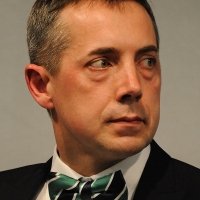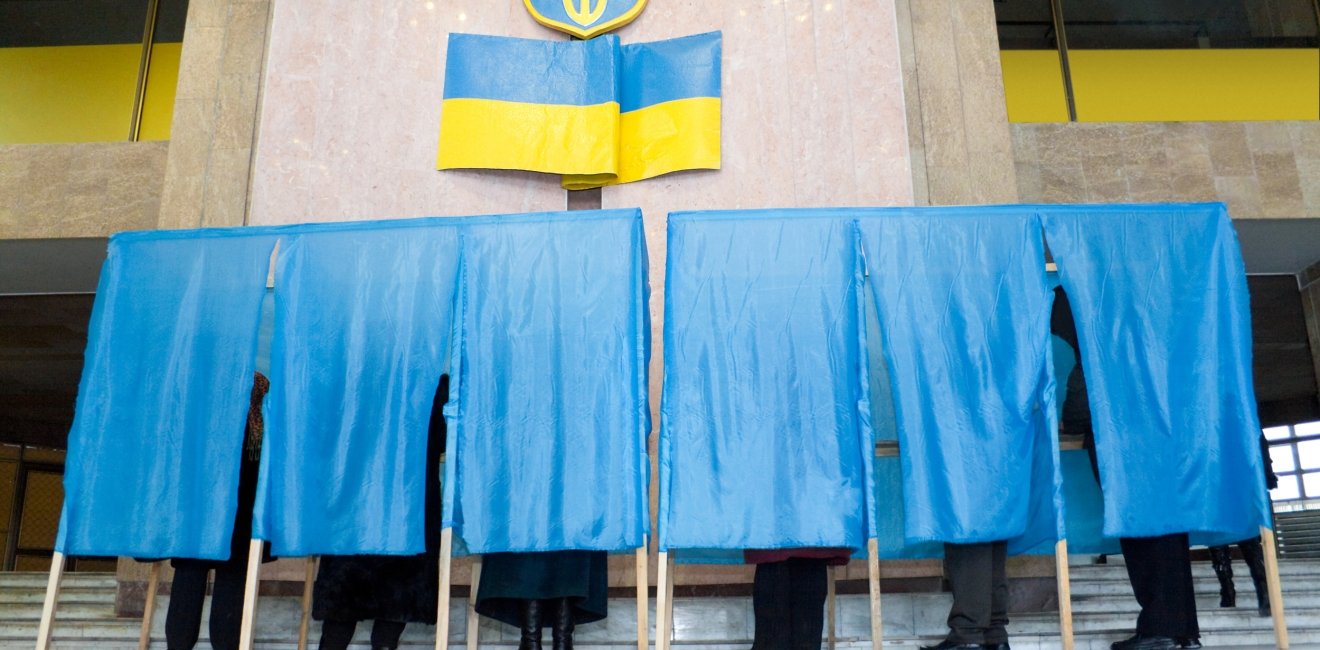
A blog of the Kennan Institute
BY MYKHAILO MINAKOV
Ukraine has entered a super-election year. Presidential elections are scheduled for March 31, with an expected run-off election to be held in April, and parliamentary elections are slated for October. These elections will be a test of the political system established after the Euromaidan.
Ukrainians will be asked to make choices about their future in a climate of low trust in public institutions and ruling groups. According to a recent poll, only 8 percent of Ukrainians trust parliament (80 percent do not trust it), 11 percent trust the cabinet of ministers (74 percent do not trust it), and 16 percent trust the Presidential Institute (70 percent do not trust it). Instead, Ukrainians trust their neighbors (68 percent), volunteers (63 percent), their church (51 percent), and the army (51 percent).
Another poll shows that 80 percent of Ukrainians are dissatisfied with the performance of President Poroshenko (15 percent are satisfied), 81 percent disapprove of Prime Minister Groysman’s performance (12 percent approve), and 90 percent are unhappy with parliament’s achievements (only 5 percent are happy). Disapproval of the political class is also evident in the lack of solid popular support for any of the current candidates: unlike in previous campaigns, the most popular candidate is preferred by fewer than 15 percent of the general population. At the same time, dissatisfaction with the current ruling groups seems to be a strong factor motivating citizens to vote: 79 percent of those polled are planning to vote in the March 31 presidential election.
Thus the electoral contest has kicked off in the context of a highly motivated yet frustrated electorate.
Of the four basic phases in a Ukrainian election—determining the candidates, campaigning, voting, and determining the winner—the first phase for the presidential elections has just concluded. On February 8 the Central Election Commission (CEC) finished the official registration of candidates.
The CEC approved the participation of forty-four candidates and denied participation to forty-seven others. This is a record number of candidates for Ukrainian presidential elections. In 1991, six candidates competed in the first presidential elections in independent Ukraine. Seven candidates were registered in 1994, thirteen in 1999, twenty-four in 2004, eighteen in 2009, and twenty-one in 2014.
The registered candidates fall into two large groups. In the first group are those who have a chance of meaningful participation in the campaign. According to a January poll by the Rating group, only six of them are supported by 5 percent or more of the electorate. Volodymyr Zelenskiy has the support of 14.1 percent, followed by Yulia Tymoshenko, at 13.1 percent, the current president Petro Poroshenko, at 10.8 percent, Yuriy Boyko, at 7.5 percent, Anatoliy Hrytsenko, at 6.1 percent, and Oleh Lyashko, at 5.2 percent. It is quite probable that support for Zelenskiy and Poroshenko will grow even bigger in February. Others, like Dmytro Hnap, a pro-Maidan investigative journalist, or Yevheniy Muraiev, an anti-Maidan politician and MP, though having no serious electoral support, inject into the public debate sound and competing ideological positions.
In the second group are candidates who, in the post-Soviet political culture, are called “technical candidates.” These candidates serve the purposes of their patron candidates. They bring into the public debate messages intended to compromise their patron’s competitors, manipulate public opinion, and get their patron’s representatives on local election commissions. This last function is decisive during ballot tabulation, where the potential for election fraud is high.
Another function of technical candidates is to confuse voters. For example, the presidential ballot will include two candidates whose names are written as “Yu. Tymoshenko”—Yulia and Yuriy Tymoshenko. Some inattentive supporters of Ms. Tymoshenko may inadvertently vote for an unknown Mr. Tymoshenko in an endless list of forty-four candidates.
The vast majority of those who tried but failed to be registered as candidates did not meet the legal requirements to do so. They did not submit the necessary documents, or they could not afford the registration fee (2.5 million UAH, or approximately U.S. $100,000). However, according to CEC chair Tetyana Slipachuk, six candidates were denied whose programs included statements aimed at changing the constitution; also, Petro Symonenko, who was nominated by the Communist Party, was denied on the ground that symbols of that party contradict Ukraine’s decommunizations laws.
Campaigning is now peaking, with the relative rankings of the leading candidates changing rapidly. So far the success of Volodymyr Zelenskiy, who recently became the leading candidate, is the biggest news. A showman, comic and successful businessman who is allegedly connected to an oligarch, Ihor Kolomoysky, Zelenskiy is supported by people who are tired of the pro-/anti-Maidan debates. Usually these frustrated individuals, mainly young people living in the eastern, southern, and north-central regions, do not actively participate in elections. Zelenskiy’s campaign aims to motivate those supporting him to actually vote.
From November 2018 to January 2019, Yulia Tymoshenko’s ratings stagnated. She and her team had focused too much on preparatory work, and lost momentum in the public debate over issues connected to the Orthodox Church autocephaly and the imposition of martial law in response to Russian aggression in the Sea of Azov. However, Tymoshenko, along with Zelenskiy, remains at the front of voters’ sympathies. And unlike Zelenskiy, she has a developed party network able to deliver her messages around Ukrainian regions and defend her votes during the tabulation process.
President Poroshenko gained several points during the thirty-day period of martial law in November–December 2018 and as a result of his campaign for a united autocephalic church, rising to 10.8 percent. However, he remains in third place. After two recent forums in which he was nominated as a nonpartisan candidate, having positioned himself as the only non-Kremlin-friendly candidate, his team is directing their efforts to getting their candidate into the second round of the presidential elections.
A leader among the electorate in Ukraine’s South-East, Yuriy Boyko faces growing rivalry from splinter groups of the Opposition Bloc (formerly the Russia-inclined Party of Regions). He competes with his ex-comrades Serhii Vilkul and Yevheniy Muraev on basically the same set of programmatic ideas, including making peace with Russia and reviving Ukraine’s industrial potential.
Finally, Anatoliy Hrytsenko has managed to consolidate some of the pro-Maidan opposition leaders into one electoral team. Supported by little more than 6 percent of likely voters, Hrytsenko is participating in the presidential elections to make sure he and his team get a solid representation in the future Verkhovna Rada, for which elections will be held in October.
With campaigning in an extremely active and controversial (or worse) phase, the outcome of the upcoming vote is impossible to predict. Arsen Avakov, minister of interior and a member of the People’s Front party, which does not participate in elections, has repeatedly said that police will make sure all candidates compete lawfully. Later this month we will review the final phase of campaigning and how it ends.
Author


Kennan Institute
After more than 50 years as a vital part of the Wilson Center legacy, the Kennan Institute has become an independent think tank. You can find the current website for the Kennan Institute at kennaninstitute.org. Please look for future announcements about partnership activities between the Wilson Center and the Kennan Institute at Wilson Center Press Room. The Kennan Institute is the premier US center for advanced research on Eurasia and the oldest and largest regional program at the Woodrow Wilson International Center for Scholars. The Kennan Institute is committed to improving American understanding of Russia, Ukraine, Central Asia, the South Caucasus, and the surrounding region through research and exchange. Read more

Explore More in Focus Ukraine
Browse Focus Ukraine
Talking to the Dead to Heal the Living

Ukrainian Issue in Polish Elections


